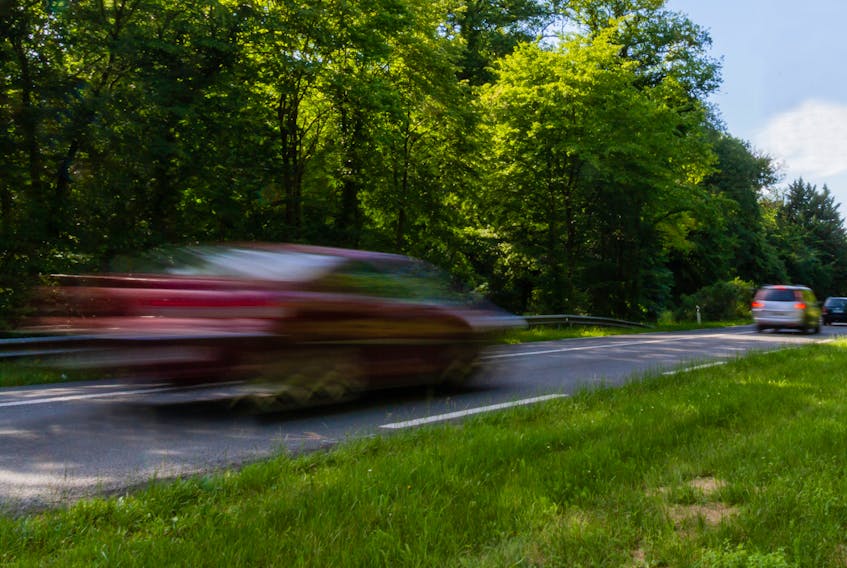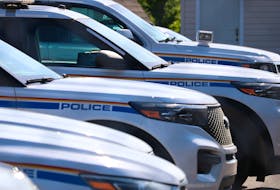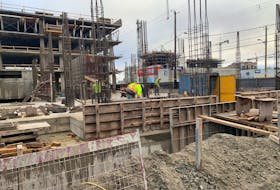
ANTIGONISH, N.S. — Drivers behind the wheel of Coach Atlantic Maritime Bus aren't nervous as they cruise along at 110 kilometres per hour on Nova Scotia's 100-series highways.
It's the slower roads that make them uncomfortable.
“Going east to P.E.I. from Aulac (New Brunswick), the highway becomes a secondary road. There’s not a lot of passing areas, and that’s where you have to be careful of cars zipping in and out,” says Mike Cassidy, president of Coach Atlantic Maritime Bus, which regularly makes trips between Nova Scotia, New Brunswick, and Prince Edward Island.
“Secondary roads are narrower; you don’t have that extra lane. And when someone’s in a hurry to get somewhere on a secondary road - where there are not a lot of solid lines and passing opportunities - they can put other motorists in harm’s way.”
The maximum speed limit in Nova Scotia and New Brunswick is 110 km/h – the highest in Atlantic Canada. Newfoundland and Labrador tops out at 100 km/h and in P.E.I., there's a 90 km/h max.
Why the differences?
Krista Dalton, a communications manager for Newfoundland and Labrador’s Service NL, says speed limits in that province are based on highway designs and is set by the Highway Traffic Act. The Department of Transportation and Works determines speeds for provincial roads while a municipality can set speed limits within its boundaries, provided it doesn’t exceed 100 km/h.
Meanwhile, the maximum limit in P.E.I. drops to 80 km/h on secondary and local roads.
“Depending on the municipality and population, we have speed limits of 70, 60 and 50 km/h,” said Stephen Yeo, chief engineer for the Prince Edward Island Department of Transportation.
Secondary and local road limits are based on the shape and geometry of the road, along with proximity to driveways and municipalities.
“As you have more businesses, driveways, and intersections close together, we adjust speed limits to reflect what drivers would expect, turning on and off the highway,” Yeo said.
DID YOU KNOW?
Before Nova Scotia converted to the metric system in the 1970s, the highest speed zone was 65 mph (105 km/h). According to the online provincial archive, the original recommendation in the 1970s was that the speed limit on 100 series highways be set to 110 km/h. What dissuaded the province from making the speed limit that high was the fact that the province was in the midst of the 1970s energy crisis. Since then, fuel became cheaper, more abundant, and was mixed to burn more efficiently in vehicles built to be more efficient and environmentally friendly. Since people were already, on average, driving close to that speed on those roads, that it made sense to raise the speed limit.
There are no controlled access highways on the island, so the lower speed limit ensures traffic can safely enter and exit highways.
“You’ll see a lot of arterial highways and driveways and secondary roads right off the main highways,” Yeo said. “We have a lot of turning lanes into secondary roads and driveways, so we do have a lot of vehicles turning on and off them.”
As for Nova Scotia, limits were kicked up to 110 km/h in 1997 on three 100-series highways initially: Highway 104 from Masstown to Salt Springs, Highway 102 from Miller Lake to Millbrook, and Highway 104 from the Victoria Street Interchange at Amherst to Thomson Station.
At the time, speed samples were collected on highways where twinning was considered. It was determined the average speed on those roads was around 110 km/h.
Another rationale for the increase in Nova Scotia was the prior success of increasing speed limits on certain highways in New Brunswick.
Modern highways
Nova Scotia’s current protocol remains the same as the 1990s. Mike Croft, an engineer with Nova Scotia Transportation and Infrastructure Renewal (TIR), says provincial policies set speeds on 100-series highways and in school zones.
But, Croft said, the protocol to determine speed on other roads is subject to more variation, “because the physical features of a road play a role in determining what the speed limit would be.”
The most important consideration is the prevailing speed.
“We do something called 85th percentile speeds, something that is used throughout North America,” Croft said. “We measure a sampling of traffic under free-flow conditions. We measure to determine the speed that 85 per cent of the traffic drives below, and fifteen per cent drives above."
The 85th percentile forms the ideal speed limit.
“If you set the speed limit too artificially low, you basically find that most motorists won’t obey the speed limit," he said.
Other physical features considered are the shape of a road, the distance drivers can see ahead and the number of pedestrians.
“We also look at development density,” Croft said, which includes driveways, residences, and commercial developments.
Collision rates factor heavily into speed limits. Engineers also analyze traffic volumes; the number of turns vehicles make; the number of vulnerable road users; the amount of available parking; and the number of traffic signals.
Most of Croft’s work in Nova Scotia involves rural roads.
“We own and maintain our rural roads, so development density and vulnerable road users aren’t as common an issue to us, as they are in significantly denser urban areas,” Croft said. “You’d not use the same kind of development out on Trunk 7 near Sherbrooke that you’d use in an urbanized area like Halifax.”
Enforcement
Does a higher speed limit encourage more speeding? A valid question, says Cpl. Jennifer Clarke, media relations officer with the Nova Scotia RCMP.
But, she says, it’s difficult to pinpoint the roads on which speeding offenses are most egregious because the number of police writing tickets in each area varies.
“There’s no way to give a number or manipulate the data to truly reflect an area where more offences happen,” Clarke said.
Read more about our Need for Speed, its risks and consequences









